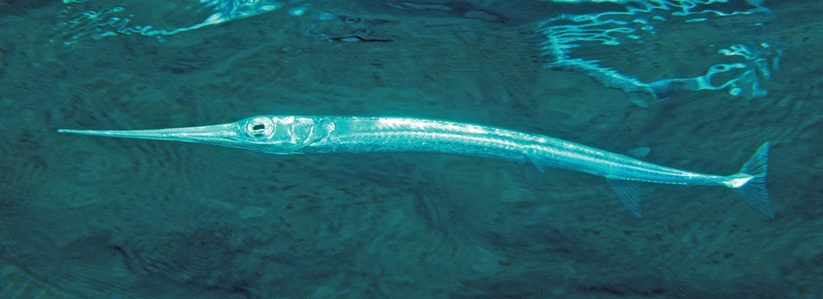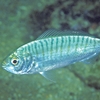General Description
Slender cylindrical fishes with very long jaws armed with small needle-sharp teeth; dorsal and anal fins short-based, far back on body; pelvic fins abdominal; tail forked. Greenish above, white below, with a broad silvery stripe along the sides; pectoral fin yellow with dark spot near tip; tips of dorsal and anal fins and lower lobe of caudal fin yellow. To 73 cm.
Biology
Longtoms are voracious predators on small fishes. They are taken by recreational anglers.
Habitat
Surface waters in bays and estuaries and along the coast, in depths of 1-10 m.
Open water
Distribution guide
Indo-West Pacific and Australia. Rarely seen in Victoria.
Species Group
Fishes › Garfishes, halfbeaks and longtoms
Depth
Max Size
73 cm
Harmful
Long, pointed snout with sharp teeth can cause injury.
Commercial Species
No
Global Dispersal
Recorded in Australia
Conservation Status
- DSE Advisory List : Not listed
- EPBC Act 1999 : Not listed
- IUCN Red List : Not listed





